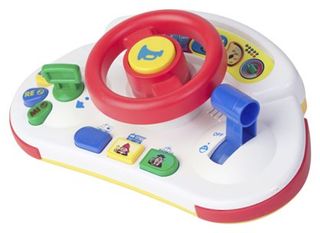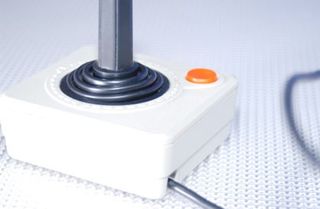Could motion control cause a game market "crash"?
How waggle may one day crumple the industry

Look at what motion control has accomplished so far: it has brought in hordes of casual gamers who would never have bought a console before. That uninformed new audience – coupled with Nintendo’s complete lack of third-party quality control – has turned the Wii library into a bubbling soup of one-note casual crap. And now, motion control is coming to both the 360 and the PS3 in the form of Natal and Move. These may not just be harmless lures for casual gamers, either, because once those potential PS3 and 360 purchasers show up, they won’t necessarily stick around for long. If enough of them come and go, the industry will expand, and then contract. Painfully.
The attitude Wii developers have been showing – jump on the biggest bandwagon and crank out as much cheap junk as possible – is the exact same one that caused the original crash 27 years ago. Back in the late ‘70s, creativity and quality were king. Games couldn’t really look all that different from each other, what with 6-pixel stickmen and floating dots being about as pretty as things got. You couldn’t copy a competitor, dress it up in fancy space-marine pants of a different color, and call it unique. Every game needed a fresh gameplay hook, and it didn’t hurt that so many gameplay elements we take for granted today hadn’t been invented yet. With the constant stream of never-seen-it-before inventiveness slurping up more and more of the non-gaming public, the entire industry exploded (thanks, Pac-Man).
History is a beautiful glimpse into the future as well as the past. While it’s becoming more commonly known, the first commercial videogame was not, in fact, 1972’s Pong. No, that medal belongs to the infinitely more obscureComputer Space(itself a shameless copy of the real first-ever videogame, Spacewar!), which appeared a year earlier. However, there’s a reason everyone thinks Pong is the first videogame: Computer Space never took off because it was too damn complicated for the average person. It took a later game, consisting of two lines and a dot, to connect with the masses.

Above:Computer Spacehad an f'in sweet cabinet, though
The next giant leap in videogame popularity came in 1980, with Pac-Man – a game that, despite many other games having already adopted the confusing “require the use of a button along with the joystick” interface, went all “retro,” threw out the button and said “Hey, look at my lonely joystick – don’t be afraid, I have no buttons to devour your helpless fingers.”
Pac-Man was so huge that there were literally arcades filled with nothing but Pac-Man machines. Let that sink in. Could you imagine an arcade with only Street Fighter II machines? And no, 80 percent Street Fighter II machines doesn’t count. Hardcore gamers would have played Pac-Man no matter what, because it was good, but the game exploded because even non-gamers could grasp it easily.

Above: "Whoa, whoa, whoa -WAY too many buttons"
Sign up to the 12DOVE Newsletter
Weekly digests, tales from the communities you love, and more
Unfortunately, where there are innovators, there are also imitators. New companies sprang up with a cynical approach: copy the good games that grabbed the non-gaming audience, slap different graphics on them, and don’t worry about quality, since people who don’t know better will buy this crap. A flood of titles ranging from mediocre to garbage filled store shelves, and the public didn’t know what to buy. The real kicker came from the originator of quality games, Atari. According to Steven L. Kent’s book The Ultimate History of Videogames, Atari caught the “anything marketed as a videogame will sell” virus, and the industry paid the price.

Above: People who stopped playing games after Pac-Man still think our controllers look like this
Stemming from an influx of business-educated (but videogame ignorant) idea-men, Atari imitated the imitators, pooping out a horrid Pac-Man port for the 2600 and, of course, the now-infamous E.T. catastrophe. After people had been burned so many times by cloned junk, and then got duped into buying what appeared to be AAA titles (licensed properties hadn’t achieved the now-familiar stigma yet), they just stopped buying anything at all. Nobody could tell what was good, and it seemed the industry had hit a plateau of advancement. Without a sense of novelty, the casual gamers forgot about their brief affair with interactive home entertainment.
Sure, a tough kernel of hardcore gamers was still buying, but they weren’t enough to sustain the home console market. While arcades were still humming along and computer games successfully catered to the larval PC gaming market, the newly gigantic console market utterly imploded. The ensuing crash was so horrible, people were declaring videogames dead. Not just good videogames, but the whole goddamn medium.
Most Popular


